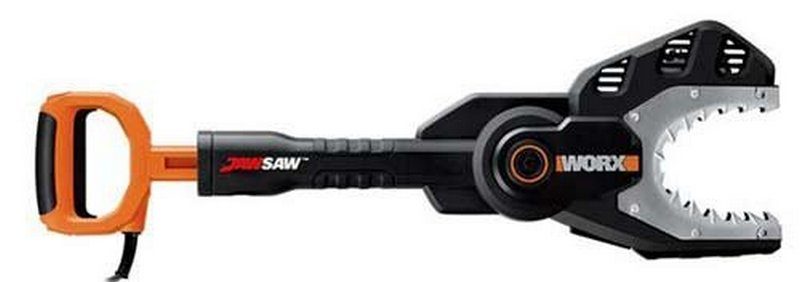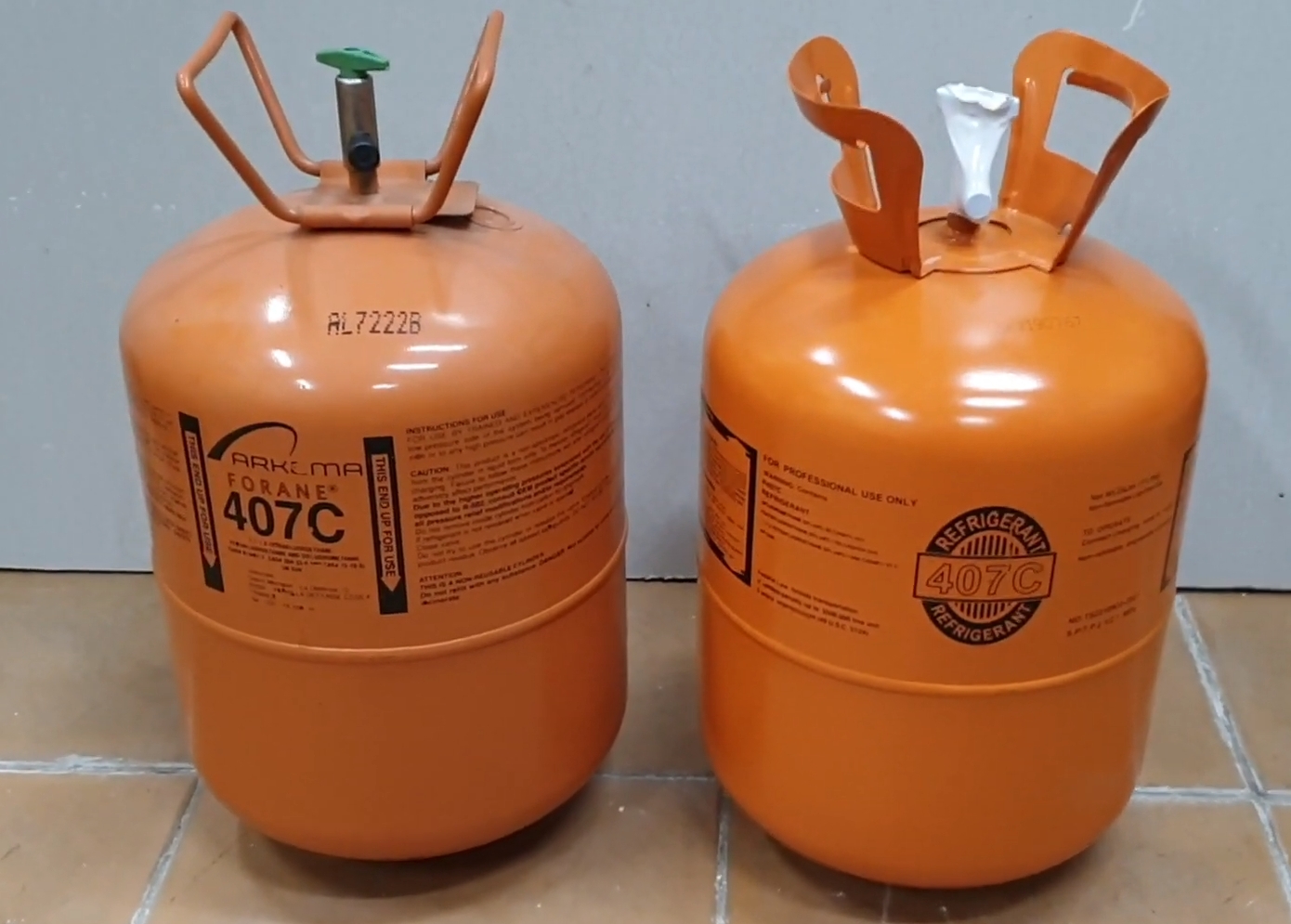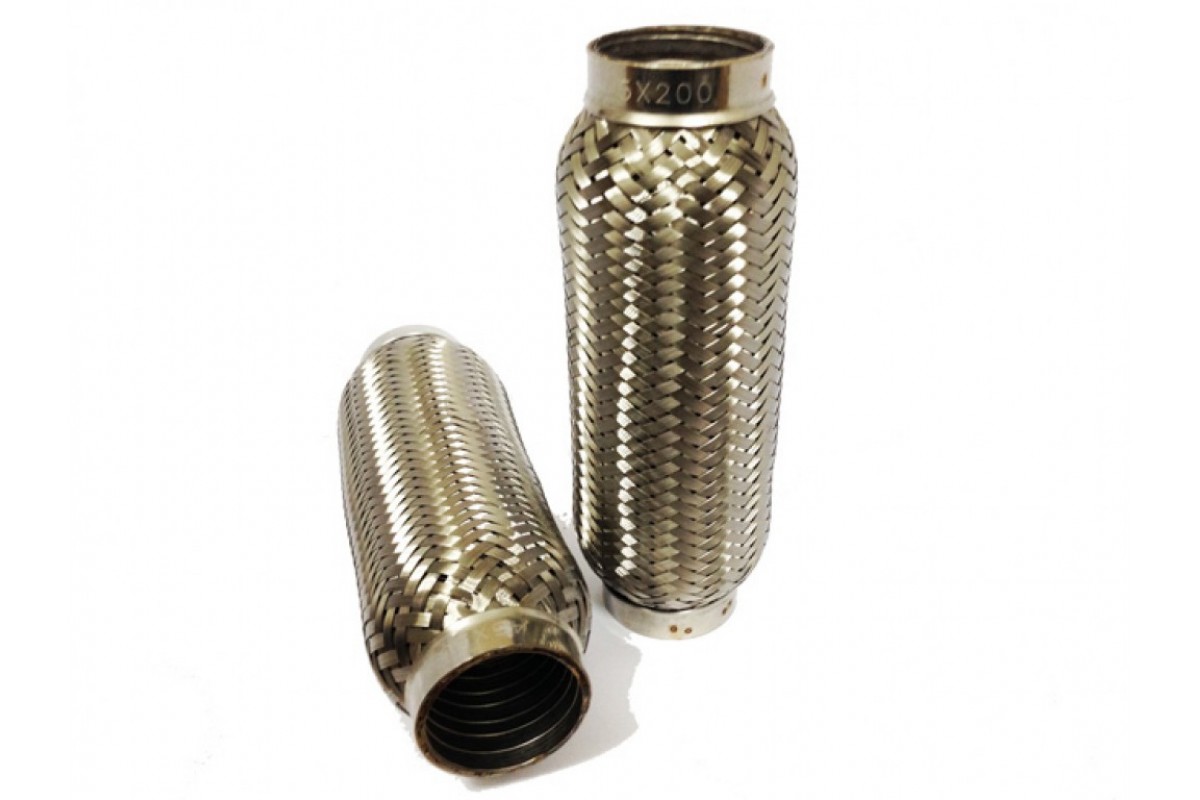Rating of the best loppers for pruning trees for 2022

In any large or small garden farm or in a country house where there are tree plantings, their crowns constantly require proper care, and for these tasks the owner must use a lopper (aka lopper).
This tool is specially designed for convenient pruning of branches in accordance with the season, while amateur gardeners can use several types of such a tool at once, which will depend on planting height and some other conditions.
In order to facilitate the work with the lopper, most types of such tools are made using the latest materials and technologies, as a result of which the productivity increases “by the eyes”, and the effort expended becomes minimal.
Among the wide variety of samples and modifications presented on the modern market, the buyer can easily choose a device that fully meets his needs and tasks.
Content [Hide]
Loppers functionality
They are used for seasonal or emergency pruning of branches of trees or tall shrubs, especially shoots. This device is designed so that gardeners can properly care for plant crowns while on the ground and without resorting to ladders. The advantages of this method are obvious, because having the right tool available, you do not have to constantly climb the ladder and move it from place to place. The use of a lopper will become especially relevant when it is necessary to process several dozen plants at once.
Specifications
The standard model of the device in question works according to the banal principle of garden shears - it has two handles (telescopic or simply elongated) and cutting elements.
The cutting elements consist of a main blade having a sickle-shaped cutting edge and an additional blade having a concave shape. The secondary blade is designed not only to directly cut through the branch, but also supports it from the other side, at the moment when the handles are brought together.
Often, instead of a secondary blade, a hook stop is integrated, which additionally supports the branch itself.
Thus, the double-bladed design is like a regular scissors, while the work of the stop modification is more like the interaction of a kitchen knife and a cutting board.
Production material
Standard mechanical loppers should be able to cut branches up to 55 millimeters thick. From this it is clear that the device itself must have the most solid foundation. At the same time, the lopper is constantly held by a person on weight, and often in the “overhead” position, therefore, manufacturers are obliged to reduce the weight of their products as far as possible, using lightweight materials in production.
The cutting parts are always made of metal, while the use of CrMoV (chromium molybdenum vanadium) is very popular, coupled with the application of a protective Teflon coating, which protects against aggressive environmental influences and reduces friction (an anti-friction special coating is responsible for this).
An alternative material can be tool, stainless or carbon steel.
Power mechanism handles increase the cutting effect and therefore can reduce the amount of muscular effort applied - they are made using durable, but lightweight materials.
For example, almost any pruner has handles made of aluminum, and more advanced models use fiberglass at all. This state of affairs is especially true when it comes to models with a length of more than 2 meters. In order to prevent slippage, the handles can be equipped with Teflon or rubber coating.
Dimensions and weight
Typically, the devices in question have a length of 0.3-4 meters, and the average weight can be 0.2-2.6 kilograms. In this case, the cutting diameter is from 30 to 55 millimeters.

NOTE. There are also chain loppers, the weight of which can reach up to 7 kilograms and they are able to cut branches up to 300 millimeters in diameter.
Existing types of loppers
An ordinary pruner is a mechanical device consisting of one or two handles and having a cutting part, which includes one or two blades. It is easy to operate, however, it requires the application of some muscular effort. These options are widely available on the market.
Still, it is necessary to clarify the design features of such devices:
- Modification with permanent handles - a shortened lopper used for processing shrubs and branches that are close to the ground. The total length of such samples is 1 meter as standard. Correctly they should be called a pruner pruner, and it is essentially a typical design with two elongated handles and two blades. The price of such a device will range from 800-3000 rubles.
- Modification with telescopic handles - in principle, almost any model with extendable handles is called a pole cutter and it is intended for trimming the crowns of tall trees. The cutting elements can have a variable design, and the entire length of the tool reaches 4 meters. The cost of such tools can be from 2000 to 4000 rubles. The best professional device will cost about 7,000 to 9,000 rubles.
Thus, based on the set length of the handles, the tools can be of various modifications. The most common ones will be discussed below.
Rod
The kit immediately includes (or is purchased separately) a special rod, which is attached to the branch cutter with the help of a standard fastener. There are also stacked variations on the market, when the entire length can be formed by successively attaching several shortened rods. In addition, in such tools, the cutting head can be rotated relative to the rod itself, which provides additional comfort during work, and the movement of the entire mechanism is carried out by a stretched rope or chain that must be pulled.
Telescopic
Handles (or handle) can be extended and fixed at a certain length.
This design can have both a short two-handed device and a long one-handed device. Sometimes, in some samples, you can even change the length for each of the handles separately.
Garden
Their distinguishing feature is that they are one monolithic handle with a cutting element in the form of a pruner at the end. Hence the name - "garden". This variation is designed for branches of small and medium thickness, the principle of operation is based on a banal snacking.The whole mechanism is activated by pressing the lever with one hand, while the other hand holds the long barbell. A widely used variation with two levers, which consists of two blades with two handles.
In turn, the garden type of the branch cutter is divided into:
- "BYPASS" (planar) - is a parallel cutter, used for trimming living branches, because it is able to provide a very even cut. Thus, the plant itself is less injured, respectively, the cut site heals faster. The whole design provides for the principle of operation of ordinary scissors, when both knives move simultaneously along the same plane. At the same time, the cutting edges of the blades can be either straight or curved. Usually, one blade is made straight, and the second is curved, in the form of a hook, which supports the branch being cut. The bypass (bypass) is called such a model of the device in question, in which the main blade runs parallel and at the same time past the concave, not sharpened. To be honest, this construction will be unambiguously true for the definition of a pruner.
- "ANVIL" (contact) - It is used to cut shriveled branches. The principle of its operation is not so much in cutting the branch as in squeezing it, while the cut is not very accurate, however, much less muscular effort is spent on the entire operation. The design consists of one sharpened cutting part, which in the process of work is connected with a blunt flat part - an anvil (contact flat mating platform).Models with two levers, in order to reduce the application of muscular effort, can be equipped with a ratchet mechanism (like ordinary garden shears), or the design provides for a different kind of power drive that can increase effort in the range from 20 to 40%. Naturally, for branches of large diameter, it is necessary to use a reinforced device adapted to serious loads. It is worth noting that reinforced modifications do not have to be heavy: various lightweight alloys or aluminum are used in their production. Some professional samples are capable of changing their own performance characteristics. An example is an adjustable pruner with variable servo transmission force or cutting angle.
Knotters universal
They even have a hacksaw in their structure to cut thick branches. Such models with rods differ in a positive way in that they are able to cut high-lying branches in an expanded range of diameters. These samples have proven themselves in the processing of both thick and thin branches, because it is enough to lean the saw teeth against the object and simply cut it down with a few translational movements. In extreme cases, the branch can be eaten with the appropriate mechanism.
Combined
Their structure provides for several interchangeable nozzles on the bar and is correctly referred to as a “combo system”. It can be represented by a wide range of variations, among which there are samples with a rotating working part, as well as systems of the "BYPASS" type, in which the reciprocal curved part is made in the form of a hook.In such a system, the movement of the blade is provided by a cord, to which the force is transmitted through a series of blocks, and the return to its original position is carried out by means of a spring. In another way, this system is called "caterpillar delimber".
Loppers electric
Their principle of operation is based on the operation of an electric motor. These devices can be powered both from the mains (household electrical network or portable generator) and from batteries. In the first case, the cost of the device will be much cheaper, but for comfortable work you will need to buy an extension cord. The latter are more mobile, but their operating time will directly depend on the capacity of the batteries, and their price is not cheap. They can be performed in a rod form with a chain saw, or equipped with a special saw blade (the so-called small version, designed for cutting the lower branches). The average cost of such a power tool ranges from 10,000 to 20,000 rubles for a battery modification, and about 7,000 - 15,000 rubles for a model with mains power.
Petrol
These samples are classified as mobile pole saws or small chainsaws, they work on the basis of a two-stroke internal combustion engine running on gasoline. Naturally, their operation will require additional costs for the purchase of fuel. The big plus of this toolkit can be called increased mobility, increased power, extended working life. They are ideal for cutting knots in large garden areas. However, their prices start at 20,000 rubles and can reach 50,000 rubles.
NOTE: Gasoline/electric powered units may be combined systems and may include brush cutters, chain saws, saw blades and other similar accessories.
More about petrol loppers (high cutters)
Despite their considerable price, these models are considered the most convenient and are most in demand among the modern buyer. In fact, this device is a motorized saw fixed on a telescopic handle. The efficiency of each optional unit will be determined by the parameters of the entire headset, through which the pruning of trees takes place, and the rotor power will play a significant role here. The cutting elements of the rotor are quite comparable in efficiency to a conventional electric / gasoline chain saw.
For the most part, gasoline pole saws are equipped with single-cylinder two-stroke engines, but combined engines can also be found. They work due to the fuel mixture, which consists of engine oil and AI-92 gasoline.
IMPORTANT! The use of higher octane fuel may cause the machine to overheat or cause it to malfunction!
The proportions at which the above components should be mixed are usually indicated by the manufacturer in the instructions for use.
Due to the high performance of gasoline engines, which are mounted on the described pole cutters, it is possible to equip them with a wide range of cutting elements. So, you can integrate them:
- Trimmer cords are extremely useful for trimming leaves and thin branches.
- Circular knives - designed for rough work on shrubs and trees.
- Disc cutters - perfectly cut medium-thick branches, good for cutting small trees.
- Chain saws - used for cutting rough and thick branches.
Bars for highlanders
As a rule, they have a telescopic structure. The retractable system can be performed in a variety of forms and be in the range of 25-35 millimeters in diameter. A metal roller is installed inside the rod, which transmits rotational movements to the cutting element. It can also be made in the form of a cable or a rod.
Handles for pruners
Pole saws are equipped with various types of handles, which depends on the operational features of the unit. Lightweight instruments, used in areas where mobility and maneuverability are at the forefront, have D-shaped handles. Thus, all control will be concentrated on a separate handle mounted on the bar.
For mowing weeds, cutting small bushes, J-handles are used. Thanks to them, the device is securely held with both hands, preventing the heavy cutting element from touching the ground.
Competent choice of knotter
The purchase of this device should be approached with all care. It is important to take into account the scale and technical features of the upcoming work, the nature of the cultivated area and plantings, so as not to make a mistake with the selection of the unit.
First of all, you should focus on the following parameters:
- Type and diameter of processed branches - this parameter is usually indicated by the manufacturer in the instructions, i.e. it explains in detail what type / diameter of branches the selected device is able to process. For example, if you have to work only with young animals or with bushes in general, then a 25 mm model will do.If there are more mature trees on the site, then it is better to choose a device of 50-55 millimeters. It is worth noting that it is better to purchase the diameter with a margin.
- The mass of the device - the assortment range of knotters is very large, one model can weigh 200 grams, the other - 2 kilograms. It is better to try to hold the unit on weight and in the “overhead” position before buying, to feel if your hands get tired? For older people and women, it is preferable to use lightweight modifications.
- Handle length - here you need to focus on the length of the hands and the height of the user himself, while taking into account the height of the trees. In the case when you have to work with high plantings, then you should pay attention to the telescopic / rod model. The best option would be a sample with adjustable handle length.
- The principle of operation - for young shoots, a planar type of delimber is also suitable, and for dry and ancient branches it is better to choose a contact one.
- Type of drive - for a small amount of work, you can use a tool with a mechanical feed, for other cases it is more advisable to use gasoline / electric devices. If the choice stops at an electrical device, then you need to remember to take into account the length of the power cord, and if it turns out to be insufficient, then do not forget to buy an extension cord. If a battery type is chosen, then it is better to give preference to a device with a removable battery, because you can always buy an additional one and thereby ensure uninterrupted operation. In the case when there is no power supply in the garden or it is unstable, then it is better to make a choice in favor of a gasoline model. However, you will need to always have a supply of fuel on hand.
- Blade lock - this option is a matter of exceptional safety, but professionals advise choosing devices where the blades are fixed in the non-working position.
- Ratchet mechanism - it provides effective cutting of branches with a large thickness, while the cut is very neat. Moreover, with its help you can always trim the incision itself.
- Precision sharpening - this indicator means an increased sharpness of the cutting edges, which indicates an increased efficiency of the entire work.
- Teflon coating - it provides additional protection for cutting elements. With its help, the friction force is reduced and damp wood does not stick to the blades.
The difference between a pruner and a pruner
Both of these devices are designed to carry out, in fact, the same work - cutting knots and branches. However, it should be remembered that these are two completely different tools. Secateurs - large scissors, with shortened handles and are more effective where a person can easily reach with his hands. Thus, the secateurs are designed for cutting young shoots and low-growing branches.

In the branch cutter, the handles will be longer, so they will perfectly cope with work in hard-to-reach places, for example, in conditions of dense and overgrown shrubs. Options with a rod and even more - they are able to cut branches at a height of up to 6 meters (which will naturally depend on the length of the rod itself and the height of the operator).
NOTE: Among other things, due to the fact that more muscular effort is required to the elongated lopper handles, such a device is able to cut thicker branches than a pruner.
As a result, the only difference between these two devices is only the length of the handles.At the same time, you can work with a pruner with one hand, but this is unlikely to work with a pruner.
Rating of the best loppers for pruning trees for 2022
Mechanical
3rd place: "Palisade-60521"
votes 0
The sample is characterized by high-quality assembly and special reliability, it is very convenient to use. The cutting elements are made of high-strength steel with anti-corrosion coating. It is easy to sharpen and perfectly copes with cutting branches up to 30 millimeters. In order to prevent slipping in the hands, the handles are covered with rubber pads.
| Name | Index |
|---|---|
| Manufacturer country | Germany |
| Weight, kg. | 0.85 |
| Cut diameter, mm. | 30 |
| price, rub. | 650 |
- Simplicity and reliability;
- Blade and handle protection;
- Quality blade material.
- Limited range.
2nd place: "FIT-77151"
votes 0
This device quickly copes with a wide range of tasks: it can qualitatively thin out the garden, mow the crowns of tall trees, trim bushes. The cutting element is made in the form of a sharp hacksaw blade with a length of 330 millimeters. Possesses the increased operational resource. Bearing parts are protected from mechanical damage and corrosion by means of a Teflon coating.

| Name | Index |
|---|---|
| Manufacturer country | Canada |
| Weight, kg. | 2.1 |
| Cut diameter, mm. | 30 |
| price, rub. | 2200 |
- Innovative technologies are applied to the cutting part;
- The presence of Teflon protection;
- Telescopic handle.
- A little heavy.
1st place: "RAKO - 4218-53/371"
votes 0
The telescopic rod of this unit is capable of stretching up to 2.4 meters, which will allow you to easily process the crowns of even the tallest trees.The control process is carried out by means of a nylon cord. The blades are made of hardened steel and are positioned in the most convenient way, making it easy to bite even thick branches. Additionally, the design provides for a curved saw blade.

| Name | Index |
|---|---|
| Manufacturer country | Taiwan |
| Weight, kg. | 1.6 |
| Cut diameter, mm. | 30 |
| price, rub. | 3000 |
- Extended handle;
- The presence of a saw blade;
- The ability to bite branches up to 32 millimeters.
- Not identified (for their segment)
Driven
3rd place: Greenworks GPS-7220
votes 0
This sample runs on electric traction and is more focused on working with high plantings. It is characterized by increased power - up to 0.9 l / s, the saw blade is an 8-inch chain, coupled with a steel tire. Manual chain adjustment and independent oil supply are possible. Equipped with an ergonomic handle with shoulder rest.

| Name | Index |
|---|---|
| Manufacturer country | USA |
| Weight, kg. | 4.1 |
| Cut diameter, mm. | 150 |
| price, rub. | 6600 |
- Excellent value for money;
- Possibility of tool-free maintenance;
- Cutting branches with a diameter of up to 150 millimeters.
- Big weight.
2nd place: "WORKS WG307E JAWSAW"
votes 0
It has a very convenient device for capturing branches, gives high performance. In the production of cutting parts, the innovative Oregon technology is applied. The design includes a telescopic handle. Equipped with a 600W electric motor.

| Name | Index |
|---|---|
| Manufacturer country | Germany |
| Weight, kg. | 4.4 |
| Cut diameter, mm. | 300 |
| price, rub. | 11000 |
- Easy to maintain;
- Has a comfortable grip;
- Adequate price.
- Not identified (for its segment).
1st place: Calm GTA 26
votes 0
In all respects, a universal delimber of all possible, if we are talking about functionality. The saw blade is protected by a special casing, powered by a rechargeable battery - one charge is enough for 2 hours of operation. Leaves a smooth and clean cut.

| Name | Index |
|---|---|
| Manufacturer country | Germany |
| Weight, kg. | 1.2 |
| Cut diameter, mm. | Almost any |
| price, rub. | 15000 |
- Versatility;
- Multifunctionality;
- Capacious battery.
- High price.
Instead of an epilogue
The conducted market analysis found that the Russian consumer prefers cheaper models with a simplified design. And even urban utility companies are in no hurry to purchase expensive universal models. The reason is that in Russian conditions, most of the functions of expensive models are simply not in demand.
new entries
Categories
Useful
Popular Articles
-

Top ranking of the best and cheapest scooters up to 50cc in 2022
Views: 131651 -

Rating of the best soundproofing materials for an apartment in 2022
Views: 127691 -

Rating of cheap analogues of expensive medicines for flu and colds for 2022
Views: 124519 -

The best men's sneakers in 2022
Views: 124033 -

The Best Complex Vitamins in 2022
Views: 121940 -

Top ranking of the best smartwatches 2022 - price-quality ratio
Views: 114980 -

The best paint for gray hair - top rating 2022
Views: 113395 -

Ranking of the best wood paints for interior work in 2022
Views: 110319 -

Rating of the best spinning reels in 2022
Views: 105329 -

Ranking of the best sex dolls for men for 2022
Views: 104366 -

Ranking of the best action cameras from China in 2022
Views: 102216 -

The most effective calcium preparations for adults and children in 2022
Views: 102011









